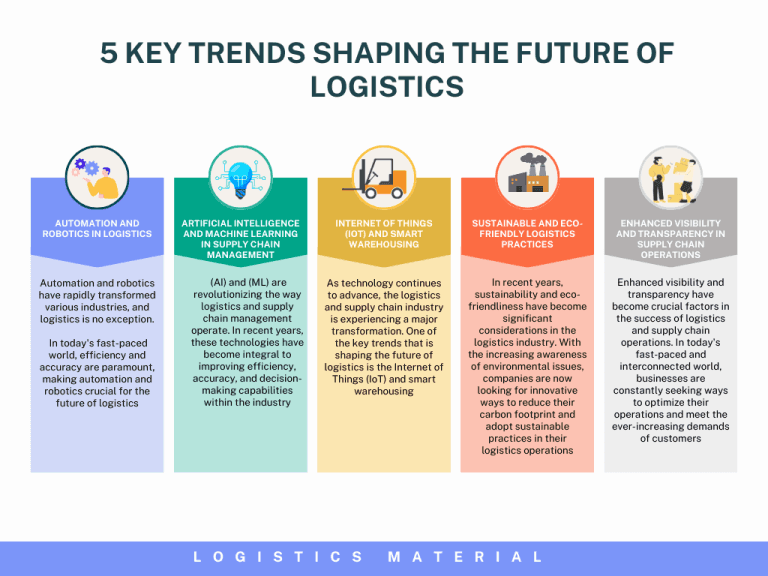By LM Team Writers – 15 October 2024
Table of Contents
Introduction
In today’s dynamic and fiercely competitive business environment, the procurement landscape has evolved from merely searching for the best prices to embracing a more strategic approach. Enter strategic sourcing—a methodology that focuses not just on the immediate costs associated with purchasing, but on the long-term value that can be extracted from supplier relationships and product selections. It’s a holistic approach that requires procurement professionals to dig deeper, analyze suppliers with a critical eye, evaluate market trends, and align purchasing decisions with the overarching goals of the organization.
Mastering the 7 steps of strategic sourcing is essential for any procurement professional looking to elevate their procurement practices. This process goes beyond the traditional pursuit of the lowest price and encompasses thorough evaluations of supplier capabilities, product quality, and potential risks. By effectively implementing strategic procurement, organizations can not only reduce costs but also enhance supplier relationships and mitigate risks, leading to a more resilient supply chain. As businesses strive for innovation and competitive advantage, strategic procurement becomes an invaluable tool. It empowers organizations to identify and collaborate with the best suppliers, negotiate favorable terms, and source high-quality products and services tailored to their specific needs.
This strategic focus enables procurement professionals to drive value throughout the organization, ensuring that every purchasing decision contributes to long-term success. In this blog post, we’ll delve into the essential steps of mastering buying strategically, equipping you with the knowledge to transform your procurement strategy and make decisions that foster innovation and growth.
What is Strategic Sourcing?
Strategic sourcing is a crucial aspect of procurement that focuses on the long-term value and benefits of the purchasing process. It goes beyond simply finding the lowest cost option and involves thoroughly analyzing suppliers, products, and market trends to make informed decisions that align with the organization’s goals and objectives. The importance of strategic procurement cannot be overstated in today’s competitive business landscape. Organizations can optimize their procurement processes, reduce costs, minimize risks, and enhance supplier relationships by implementing buying strategic practices.
Strategic acquisition enables organizations to identify the best suppliers, negotiate favorable terms, and ensure high-quality products and services that meet their specific needs. In essence, mastering the 7 steps of strategic buying empowers procurement professionals to make strategic decisions that drive value, innovation, and competitive advantage for their organizations. By understanding the intricacies of the strategic procurement process and its significance, businesses can achieve sustainable cost savings, operational efficiency, and overall procurement success.
How to Drive Significant Cost Savings Through Procurement?
Driving significant cost savings through procurement requires a strategic approach that emphasizes long-term value over short-term gains. Mastering the seven strategic sourcing is essential in this endeavor, as each step contributes to a comprehensive understanding of the supply chain landscape and potential savings opportunities. The journey begins with thorough market analysis—understanding current trends, pricing structures, and potential suppliers is crucial.
This first step allows procurement professionals to identify not just the cheapest options, but also those that offer the best value in terms of quality and reliability. By closely examining market conditions, businesses can position themselves to negotiate more effectively and capitalize on favorable pricing, rather than merely focusing on the lowest initial costs. Next, conducting a robust supplier evaluation is vital. This involves assessing potential suppliers based on criteria such as financial stability, responsiveness, and past performance.
By building relationships with suppliers who align with the organization’s goals, procurement teams can foster collaboration that often leads to substantial cost efficiencies. Strong partnerships with suppliers may also open doors to innovative solutions and further cost-saving opportunities. Once suppliers are identified, effective negotiation comes into play. Utilizing data gathered during market analysis and supplier evaluations, procurement professionals can negotiate terms that favor not only cost-saving but also quality improvements. Leveraging collective buying power or engaging in long-term contracts can help secure better prices and terms that drive down overall procurement costs.
Moreover, it is essential to continuously monitor and evaluate supplier performance post-contract. This ongoing assessment allows procurement teams to identify areas for improvement, ensuring that any evolving needs of the organization are met without escalating costs. By maintaining a proactive stance, businesses can swiftly address any issues that arise, reinforcing the organization’s commitment to optimizing procurement expenditures. Lastly, fostering a culture of collaboration between departments within the organization can uncover additional insights into procurement practices. Sharing knowledge across teams—be it finance, operations, or marketing—can shed light on hidden costs and identify further areas where savings can be realized.
In summary, driving significant cost savings through procurement is not merely about trimming spending; it’s about enhancing the entire sourcing strategy. By mastering the 7 steps of strategic procurement, organizations can not only slash costs but also ensure that they are investing wisely in high-quality products and services that bolster their competitive edge. Embracing this strategic mindset will ultimately lead to a more robust and sustainable procurement process, which is essential for success in today’s dynamic business environment.
How Strategic buying Can Improve Your Business?
Strategic procurement is not just a trendy buzzword—it’s a vital pillar that can drive significant improvements across various facets of your organization. By embedding the principles of the method of purchasing strategy into your procurement practices, you can transform not only how you buy goods and services but also how you foster relationships with suppliers and enhance overall operational efficiency. One of the foremost benefits of strategic acquisition is cost reduction. By thoroughly analyzing market trends and supplier capabilities, organizations can leverage data to negotiate better terms and identify opportunities for savings.
This proactive approach transcends merely chasing the lowest price; it emphasizes value creation, allowing businesses to allocate resources more efficiently and invest in other critical areas. Additionally, a strategic procurement process cultivates stronger supplier relationships. By engaging with suppliers as strategic partners rather than transactional vendors, companies can benefit from enhanced collaboration, innovative solutions, and a consistent supply of high-quality products and services. This partnership approach also helps in risk mitigation, as organizations can proactively address potential issues with suppliers and create contingency plans to ensure continuity in operations.
Furthermore, strategic procurement enhances agility and responsiveness to market changes. With a holistic view of the logistics, and supply chain and an understanding of emerging market trends, businesses can swiftly adapt to fluctuations in demand or supply disruptions. This agility allows organizations to stay ahead of the competition, offering superior customer service and solidifying their position in the market. Ultimately, Mastering the principle of strategic buying strategically empowers procurement professionals to make informed decisions that align with the organization’s long-term goals.
From optimizing procurement processes to driving innovation, enhancing inventory management, and increasing competitive advantage, strategic procurement is an essential component in building a resilient, efficient, and successful business. By investing time and effort into refining your procurement strategies, you position your organization not just to survive, but to thrive in a challenging business landscape.
Here’s a brief introduction to the 7 steps of strategic sourcing:
1) Assessing Needs and Setting Objectives
In the world of procurement, mastering the strategic buying process is key to achieving success and efficiency. The first crucial step in this process is assessing needs and setting objectives. Before diving into any sourcing activities, it is essential to have a clear understanding of what your organization needs and what goals you aim to achieve through strategic procurement. This involves conducting a thorough analysis of your current procurement practices, identifying areas for improvement, and defining specific objectives that align with your organization’s overall strategic goals.
Assessing needs involves evaluating factors such as current supplier relationships, product/service requirements, budget constraints, and any potential risks or challenges that may impact the sourcing process. By taking the time to assess your organization’s needs, you can develop a clear roadmap for your strategic acquisition initiatives and ensure that your sourcing activities are aligned with your business objectives. Setting objectives is equally important in the buying strategic process.
Clearly defined objectives serve as a guiding light throughout the sourcing journey, helping you stay focused on what you aim to achieve and enabling you to measure the success of your sourcing efforts. Objectives should be specific, measurable, achievable, relevant, and time-bound (SMART), allowing you to track progress, make informed decisions, and drive continuous improvement in your procurement practices. By effectively assessing needs and setting objectives at the outset of your strategic buying strategically process, you lay a solid foundation for successful sourcing outcomes and pave the way for procurement excellence within your organization.
2) Market Analysis and Supplier Identification
Market Analysis and Supplier Identification are crucial steps in the buying strategic process. Before making any procurement decisions, it is essential to thoroughly assess the market landscape and identify potential suppliers who can meet your organization’s needs effectively. Conducting a detailed market study involves evaluating factors such as market trends, supplier capabilities, pricing dynamics, and potential risks. Furthermore, supplier identification plays a vital role in determining the right partners to engage with for your sourcing requirements. This step involves researching and shortlisting suppliers based on their track record, product quality, reliability, and cost competitiveness. By carefully analyzing the market and identifying reputable suppliers, organizations can make informed decisions that align with their strategic objectives and drive procurement success.
3) Negotiation and Contracting
Negotiation and Contracting are crucial steps in the strategic procurement process, laying the foundation for successful procurement outcomes. Effective negotiation skills are essential in securing favorable terms and pricing from suppliers. It involves clear communication, understanding the needs of both parties, and finding mutually beneficial solutions. During this phase, it’s important to establish clear objectives, conduct thorough market research, and leverage data and insights to drive informed decision-making.
Once negotiations are finalized, the contracting phase begins. Contracts serve as the legal framework for the procurement relationship, outlining terms and conditions, deliverables, pricing structures, and performance metrics. It is essential to ensure that contracts are comprehensive, clearly defining roles and responsibilities to mitigate risks and avoid misunderstandings. Attention to detail is key during the contracting phase to safeguard against potential disputes and ensure compliance with regulatory requirements. By mastering the negotiation and contracting steps of strategic sourcing, organizations can enhance supplier relationships, optimize costs, and drive sustainable procurement success.
4) Supplier Relationship Management
Supplier Relationship Management (SRM) is a crucial aspect of strategic procurement that can greatly impact the success of your procurement process. Establishing and maintaining strong relationships with your suppliers is key to ensuring a smooth and efficient supply chain. Effective SRM involves clear communication, mutual trust, and collaboration between your organization and your suppliers. By fostering positive relationships with your suppliers, you can enhance transparency, promote innovation, and achieve better value for your organization. Implementing robust SRM practices will not only strengthen your supply chain but also drive long-term success and sustainability in your procurement endeavors.
5) Risk Management and Contingency Planning
Effective risk management and contingency planning are crucial aspects of successful strategic purchasing processing. In the dynamic landscape of procurement, uncertainties and disruptions are inevitable. By incorporating robust risk management strategies and contingency plans into your sourcing process, you can mitigate potential threats and ensure continuity in your supply chain operations. To master this crucial step, start by conducting a thorough risk assessment to identify potential vulnerabilities and their potential impact on your sourcing strategy.
Consider factors such as geopolitical risks, market fluctuations, supplier reliability, and regulatory changes that could affect your sourcing outcomes. Once risks are identified, develop contingency plans to address them proactively. This may involve diversifying your supplier base, establishing alternative sourcing options, or negotiating flexible contracts that provide buffer mechanisms in case of unexpected events. Regularly review and update your risk management and contingency plans to adapt to changing circumstances and emerging threats. By prioritizing risk mitigation and contingency planning in your buying strategic process, you can enhance resilience, minimize disruptions, and drive procurement success.
6) Performance Monitoring and Improvement
Performance Monitoring and Improvement play a crucial role in the method of purchasing strategic process, ensuring that the procurement activities are aligned with the organization’s objectives. After contracts are signed and suppliers are on boarded, it is essential to continuously monitor their performance to identify any deviations from the agreed-upon terms and take corrective actions when necessary.
To effectively monitor supplier performance, key performance indicators (KPIs) should be established to measure various aspects such as quality, delivery timeliness, cost-effectiveness, and overall satisfaction. These KPIs provide valuable insights into how well suppliers are meeting expectations and help in identifying areas for improvement. Regular performance reviews and feedback sessions with suppliers are essential to address any issues promptly and collaboratively work towards enhancing performance.
By fostering open communication and transparency, both parties can work together to overcome challenges and drive continuous improvement. Furthermore, leveraging technology and data analytics can streamline the performance monitoring process by providing real-time visibility into supplier performance metrics and trends. This data-driven approach enables procurement professionals to make informed decisions and proactively address any potential risks or opportunities for improvement. In conclusion, performance monitoring and improvement are integral components of strategic purchasing that empower organizations to optimize supplier relationships, drive operational efficiency, and achieve sustainable procurement success. By prioritizing continuous improvement and collaboration with suppliers, businesses can enhance their competitive advantage and achieve long-term value creation.
7) Continuous Improvement and Innovation
Continuous Improvement and Innovation play a vital role in the strategic buying strategically process. Once you have completed the steps of strategic procurement, it is crucial to continuously monitor and evaluate the effectiveness of your sourcing strategy. By regularly reviewing your processes and outcomes, you can identify areas for improvement and implement innovative solutions to enhance your procurement practices.
Continuous improvement ensures that your sourcing efforts remain efficient, cost-effective, and aligned with your organization’s goals. Embracing innovation in strategic acquisition allows you to stay ahead of the curve, adapt to changing market conditions, and drive sustainable growth. By fostering a culture of continuous improvement and innovation, you can elevate your strategic investment capabilities and achieve procurement success in the long run.
Frequently Asked Questions
What are the key benefits of implementing strategic sourcing?
Strategic buying offers a range of benefits for organizations, including:
- Cost savings: By optimizing procurement processes and negotiating favorable terms with suppliers, businesses can achieve significant cost reductions.
- Improved efficiency: Strategic sourcing streamlines purchasing activities, leading to faster turnaround times and reduced administrative burdens.
- Enhanced supplier relationships: Building strong relationships with reliable suppliers fosters collaboration and innovation.
- Reduced risks: Identifying and mitigating potential risks in the supply chain ensures continuity and minimizes disruptions.
- Increased transparency: Strategic acquisition promotes transparency through clear communication and defined processes.
- Improved quality: By establishing quality standards and monitoring supplier performance, organizations can ensure consistent product and service quality.
Who within an organization typically takes the lead on implementing strategic contracting?
The responsibility for implementing strategic contracting falls on procurement professionals. However, it’s a collaborative effort that may involve individuals from various departments, such as finance, operations, and enginecering.
How can businesses get started with strategic buying process?
Organizations can initiate their strategic process journey by:
- Conducting a needs assessment: Identify current procurement practices, areas for improvement, and desired outcomes.
- Setting clear objectives: Define specific, measurable goals for your strategic buying initiatives.
- Building a team: Assemble a cross-functional team with expertise in procurement, finance, and other relevant areas.
- Developing a sourcing strategy: Create a plan outlining the steps you’ll take to achieve your objectives.
What are some common challenges businesses face in implementing strategic purchasing?
Some challenges organizations might encounter include:
- Lack of internal resources or expertise
- Resistance to change from traditional purchasing practices
- Difficulty in identifying and evaluating potential suppliers
- Managing complex supplier relationships
- Effectively monitoring and measuring performance
How can technology be leveraged to enhance strategic purchasing?
Technology can play a significant role in improving various aspects of strategic purchasing, including:
- Market research and supplier identification
- Streamlining negotiation and contracting processes
- Real-time performance monitoring and data analysis
- Facilitating collaboration with suppliers
- Automating repetitive tasks
The Bottom Line
In conclusion, mastering the 7 steps of strategic sourcing is crucial for organizations looking to optimize their procurement processes and drive efficiency and cost savings. By following these steps outlined in our blog post, businesses can streamline their sourcing strategies, enhance supplier relationships, and ultimately achieve greater success in their procurement endeavors. Embracing strategic buying strategically principles is a key element in staying competitive and maximizing value for your organization. To learn more about how strategic sourcing can benefit your organization, visit our website at www.logisticsmaterial.com.













Great post!